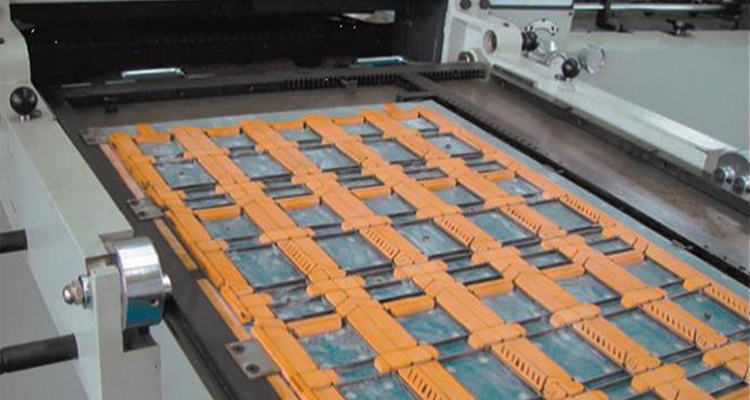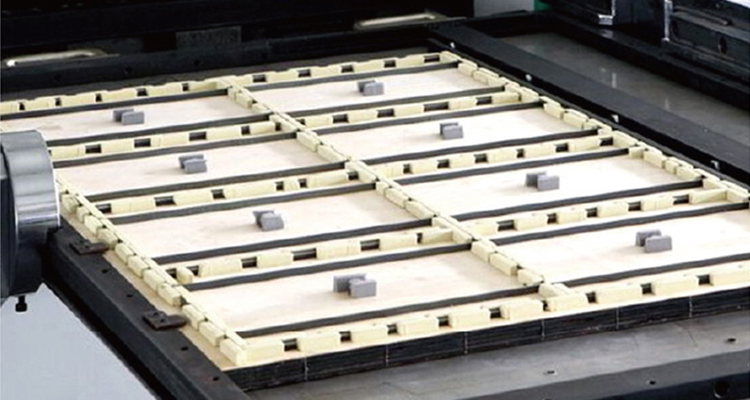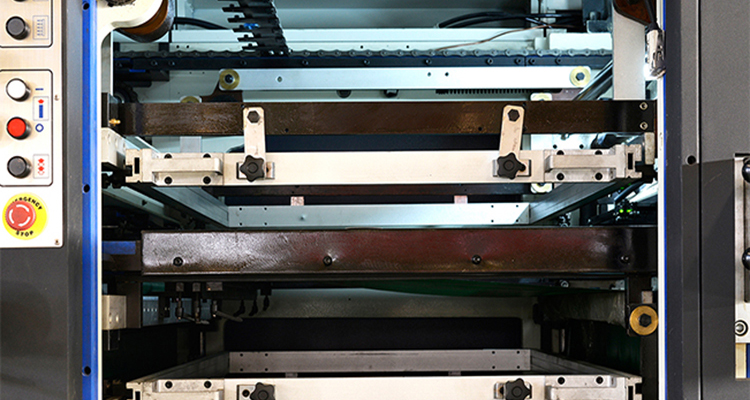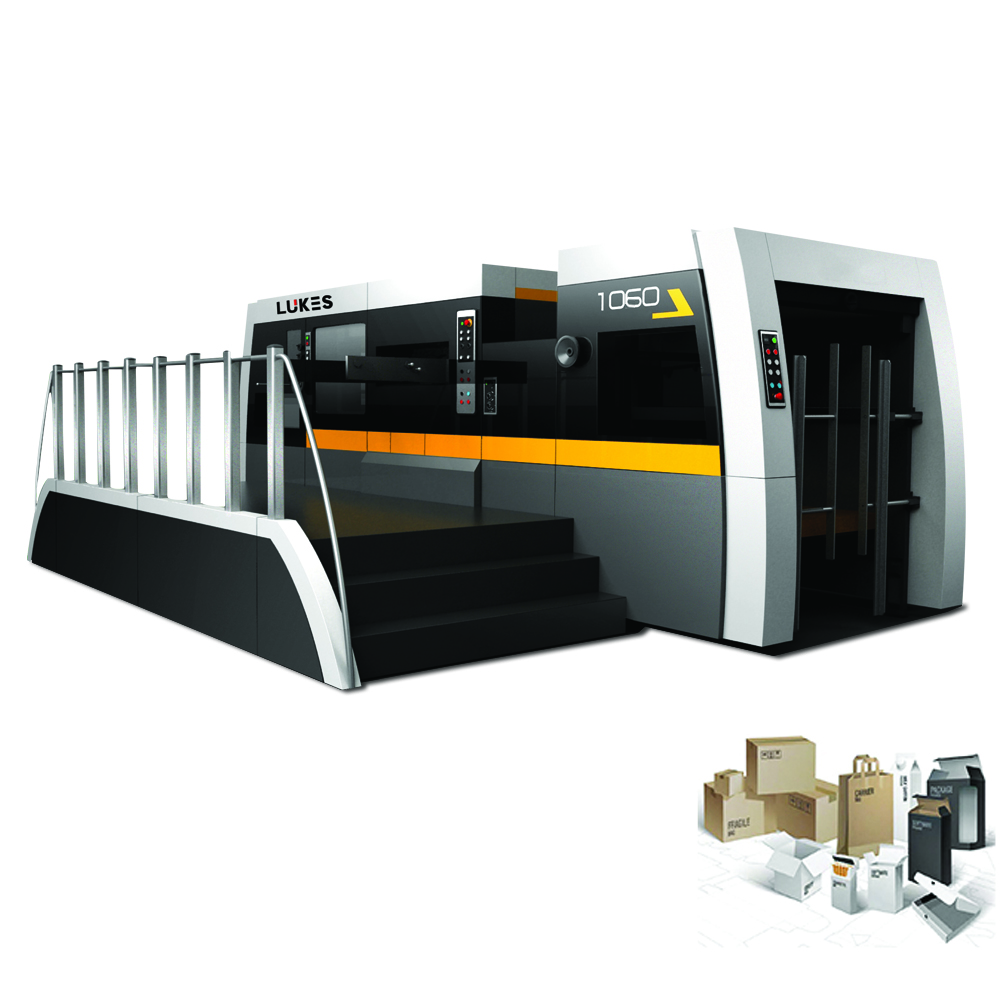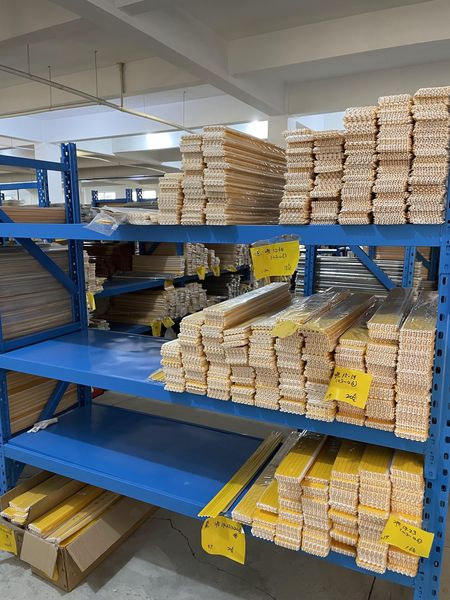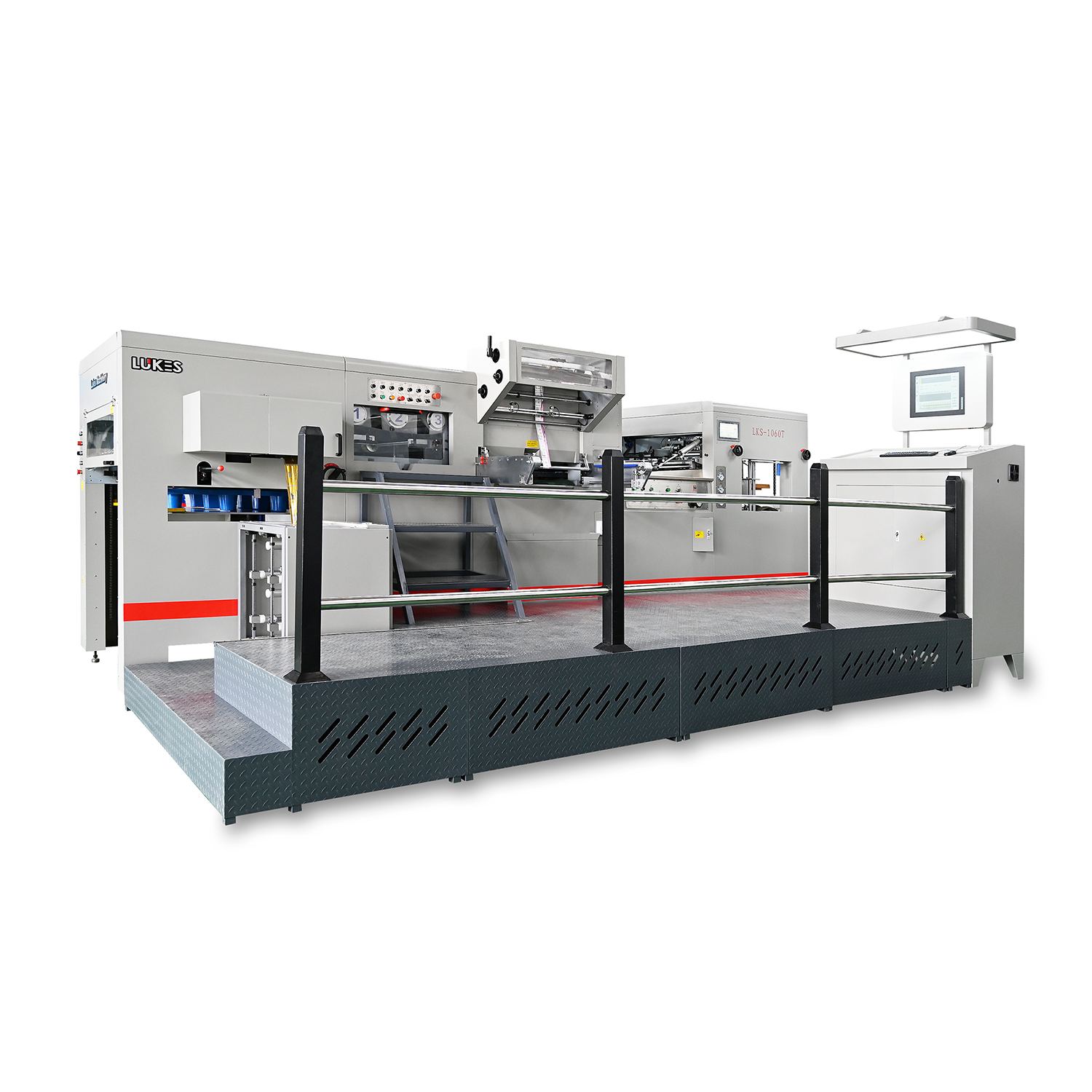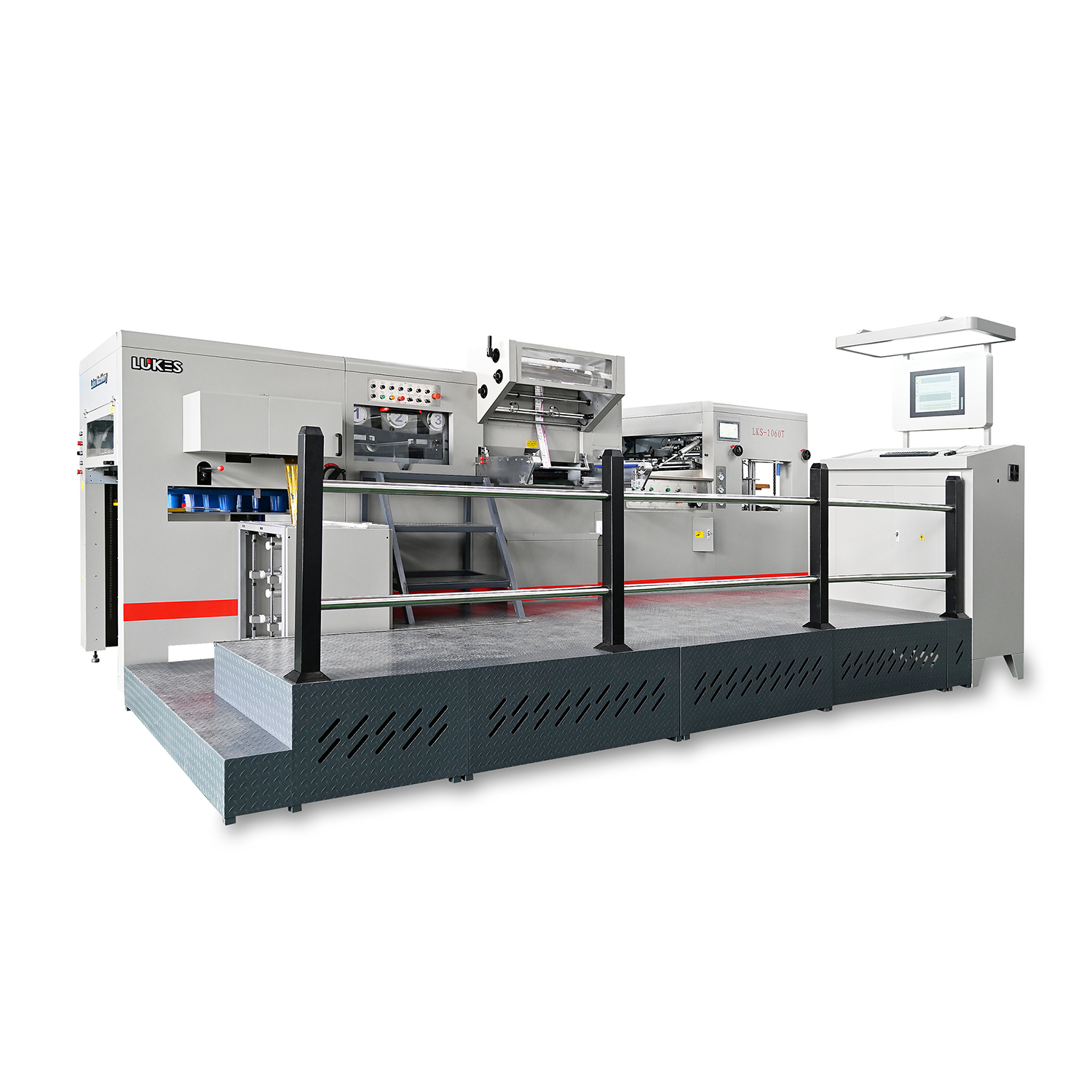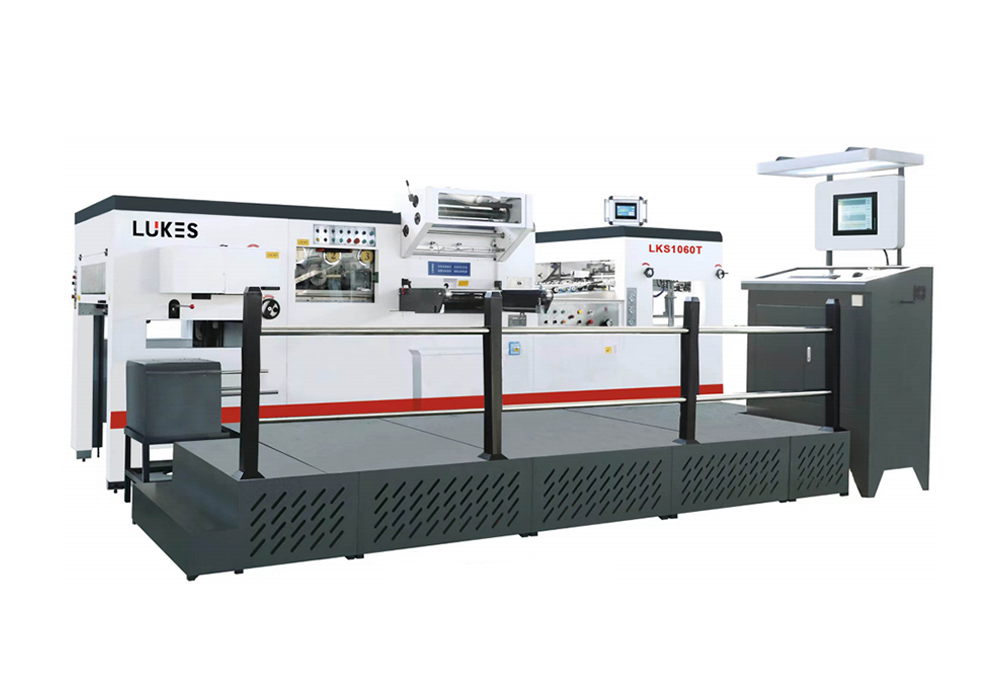11 Frequently Asked Questions about Color Box Die Cutting – Technical Support
Die cutting is a key step in color box processing. How to ensure the quality of die cutting is a very important issue for printing factories. At present, the main problems faced by the color box printing factory are long time for plate change, poor printing to cutting accuracy, poor die cutting quality, too many paper hairs, too many connection points, irregular marks, slow production speed, and scrap rate. higher.
Today, Lukes Machinery will introduce to you some of the more common quality problems and their solutions, hoping to be helpful to you.
Die cutting accuracy is not high
Cause of the problem: The reasons for the low precision of die cutting include the problem of the die cut version itself and the problem of printed matter.
► The error of the hand made die cutting plate is large;
► The different working environment of die cutting indentation and printing process will cause paper deformation, resulting in inaccurate position of die cutting indentation, especially after glazing and lamination, the deformation of paper is more serious, which affects the precision of die cutting.
Solution: Choose advanced die cutting plate making technology to improve the precision of die-cutting plate.
Try to ensure that the die cutting indentation and the printing process are carried out in the same working environment, or ensure the identity of the working environment (ie the same temperature, relative humidity, etc.);
Die cutting pretreatment should be performed on the glazing and laminating paper to minimize the influence of paper deformation on the die cutting accuracy.
Die cut creasing produces “explosive lines” and “dark lines”
Cause of the problem: “Breaking line” means that the pressure of the die cutting creasing is too large, which exceeds the bearing limit of the paper fiber, causing the paper fiber to break or partially break;
“Dark line” refers to the creasing line that should not exist, generally due to inappropriate selection of die cutting plate and indentation steel wire, improper adjustment of die cutting pressure, poor paper quality, inconsistent paper fiber direction and die cutting plate layout direction, The low moisture content of the paper leads to a decrease in flexibility and other reasons.
Solution:
► Select the appropriate die cutting plate;
► Properly adjust the die cutting pressure;
► Put the prints to be die cut in the workshop for a period of time before die cutting;
► Improve the relative humidity of the workshop environment;
► Minimize the tension on the paper.
In addition, there is a special case, that is, when die cutting a small box of hard cigarette packs, since the distance between the creasing lines in many positions is very close, if the height of the creasing steel line is configured according to the normal situation, the paper will not be affected during molding. Excessive pulling force will also cause “burst line”.
Therefore, we should try to minimize the pulling force on the paper. There are two methods: one is to reduce the height of the indentation steel wire; the other is to reduce the thickness of the bottom die of the creasing, but the two cannot be used at the same time, otherwise it will not work. to a good creasing effect.
A better method is to reduce the height of the creasing steel wire, which is usually 0.1 to 0.2mm, depending on the quantitative determination of the paper. The height of the creasing steel wire that needs to be lowered for paper with a quantitative weight of more than 350g/m2 is 0.2mm. , the basis weight of paper below 350g/m2 should be reduced by 0.1mm.
Creasing line movement, not full
The cause of the problem: the creasing steel wire twists under the action of the die cutting pressure, which will cause the creasing line to move; insufficient die-cutting pressure will cause the creasing line to not be full.
Solution: The method of replacing the die-cutting plate and increasing the die-cutting pressure can improve this problem.
Die cutting fluff and dust
Cause of the problem: During die cutting, the edge of the die cut product is often not clean and fluffy, especially at the edges near the cresing line.
This is because the rubber strips and indentation steel wires on the die cutting plate exert a pulling force on the paper during the die cutting and pressing, and the paper is pulled off by the generated pulling force when it is not completely cut through, resulting in burrs.
Solution: First, choose different types of die-cutting knives according to the paper. Die-cutting knives include straight-grained knives and horizontal-grained knives. The blades of the two types of grains are divided into high and short. The grains formed by the blade are different in height and height, which is directly related to the quality of die-cutting and the service life of the die-cutting knife.
In terms of avoiding die-cutting fluff, straight-grained knives are better than horizontal-grained knives; in terms of service life, short-edged knives are better than high-edged knives.
► When die-cutting film-coated cardboard, a straight-grained high-blade knife should be used, and the blade should be ground. It is best not to use the concave-convex one-step forming process, otherwise the pressure will have a great impact on the die-cutting;
► When processing ordinary cardboard, it is advisable to use a short-edged knife, and the texture of the knife edge is determined according to the quality of the paper fiber.
► When processing ordinary cardboard, it is advisable to use a short-edged knife, and the texture of the knife edge is determined according to the quality of the paper fiber.
► For paper with poor or thick fibers, a straight-grain knife should be used, and paper with better fiber quality can be selected with a horizontal-grain knife to improve the service life of the die-cutting knife.
Secondly, a 60° arched rubber strip can also be attached to the die-cutting knife that is closer to the indentation steel wire to reduce the pulling force of the indented steel wire here on the paper during die-cutting and pressing.
For example, 0.4mm×1.3mm, 23.4mm high indentation steel wire is usually used when die-cutting paper with 300g/m2 weight. In this way, the pulling force on the paper during die-cutting and pressing is reduced, and the problem of die-cutting fluff can be basically solved.
Die cut “paste version”
Cause of the problem: Die cutting “paste” means that the paper sticks to the die cutting plate. The reasons for this failure are as follows:
► The density or hardness of the sponge rubber strip pasted around the die-cutting knife is too small, and the resilience is insufficient;
► The cutting edge of the die-cutting knife is not sharp, and the paper is too thick, causing the knife to stick to the knife during clamping or die cutting.
Solution: According to the distribution of die cutting knives, reasonable selection of sponge strips with different hardness or replacement of die-cutting knives can be made.
Die cut “Loose Edition”
Cause of the problem: The die-cutting “loose plate” is mainly related to the plate-making process of the die cutting plate and the sponge rubber strip. If the shape of the job is complex or there are many arranged jobs, and the connection points on the die-cutting plate are small and few, it is easy to cause the die-cutting to be scattered.
Solution: Appropriately increase the number of connecting points on the die-cutting plate, and try to keep the length direction of the printed matter consistent with the feeding direction when making the die-cutting plate.
Too many connection points
The end user of the color box always requires smaller and fewer connection points, and the manufacturer always makes the machine run faster, which increases the difficulty of the operator. In order to ease the difficulty, the connection point should be at the point of force, use a wire grinder, and use a hard rubber strip or cork on the edge of the knife where the connection point needs to be made to prevent the connection point from breaking, so that the connection point can be smaller and less.
Creasing line is irregular
Considering the need of folding and pasting, the color box must have a good indentation line. What’s more, the opening force must be constant and consistent when the boxes are running on the automatic packaging machine. In this way, the selection of the appropriate type of trace is an essential element when die-cutting. According to the thickness of the paper, choose the height and width of the crease line, and glue the appropriate crease line on the die cutting bottom plate, the indentation can achieve higher quality and make the box easy to fold.
Version change time is long
The preparations before the version change should be done well. Using the centerline of the equipment as a datum, die cutting tools can be easily and precisely set, including full size die cutting plates, pre installed base plates, and more. At the same time, the off-machine pre-installation of the tool, and the fine tuning on the machine also further reduces the set up time for repetitive products. Under a good management system, the time for changing the version of the product is usually repeated, including automatic waste removal, which can be completed within 30 minutes.
Slow production
The die cutting speed of many color box printing factories is relatively low, such as 2000-3000 sheets/hour, while the die-cutting speed of some printing factories can be as high as 7000-7500 sheets/hour.
With a modern automatic die cutting machine, the operator can easily reach the highest production speed. The production speed is optimized by using the tools recommended by the equipment manufacturer. In addition, the product can also achieve high quality.
High scrap rate
Most printing plants typically have high scrap rates. There will be some scrap at the beginning of a die cut set-up, which can be reduced by using the right tools and the right steps. Scrap during operation is caused by downtime and paper jams. Correct adjustment and accurate tool preparation can reduce the scrap rate. In addition, manual scrapping increases scrap rates and reduces profit margins.
With the upgrading of the consumer market, consumers have higher and higher requirements for the appearance of product packaging. Therefore, it is very important for printing factories to do a good job in color box printing. Only by understanding the problems that are easy to occur and solving them can we better complete the color box printing.
Shandong Lukes Machinery is a factory specializing in the production of automatic die cutting machines. We have a professional technical team and after sales service personnel. We provide professional machine maintenance and use knowledge. If you are interested in such machines, welcome to contact us.
